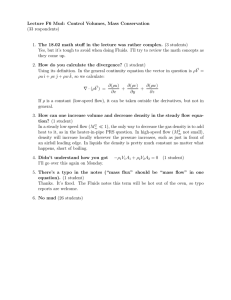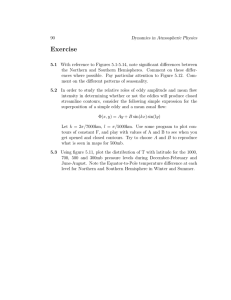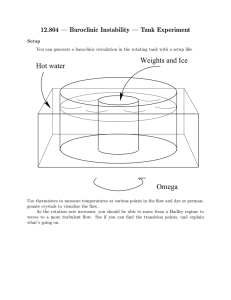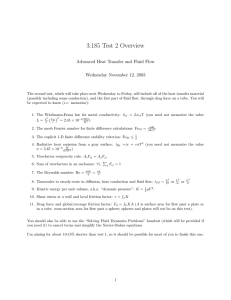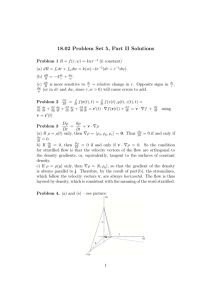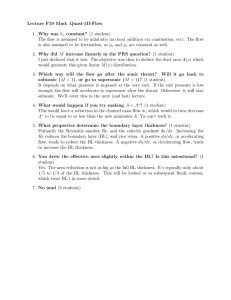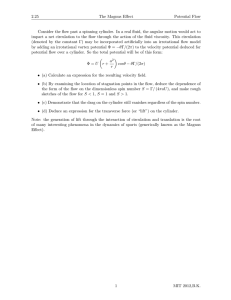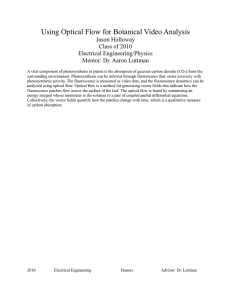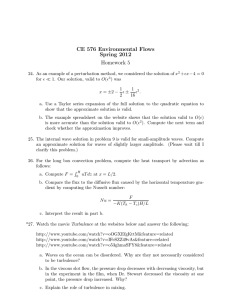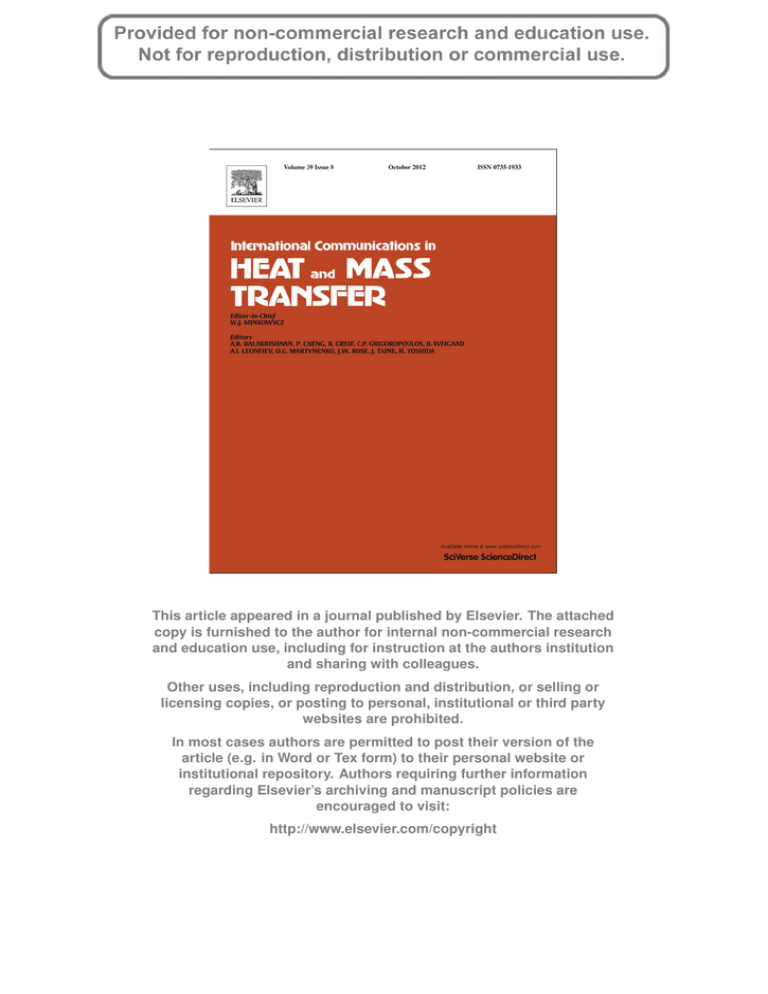
This article appeared in a journal published by Elsevier. The attached
copy is furnished to the author for internal non-commercial research
and education use, including for instruction at the authors institution
and sharing with colleagues.
Other uses, including reproduction and distribution, or selling or
licensing copies, or posting to personal, institutional or third party
websites are prohibited.
In most cases authors are permitted to post their version of the
article (e.g. in Word or Tex form) to their personal website or
institutional repository. Authors requiring further information
regarding Elsevier’s archiving and manuscript policies are
encouraged to visit:
http://www.elsevier.com/copyright
Author's personal copy
International Communications in Heat and Mass Transfer 39 (2012) 1138–1145
Contents lists available at SciVerse ScienceDirect
International Communications in Heat and Mass Transfer
journal homepage: www.elsevier.com/locate/ichmt
On the role of inserts in forced convection heat transfer augmentation☆
Chou Xie Tan, Wai Loon Mah, Yew Mun Hung ⁎, Boon Thong Tan
School of Engineering, Monash University, 46150 Bandar Sunway, Malaysia
a r t i c l e
i n f o
Available online 20 July 2012
Keywords:
Dimensional analysis
Enthalpy
Heat transfer augmentation
Insert
a b s t r a c t
The role of inserts in internal forced convection has been widely acknowledged as a passive device in the heat
transfer enhancement. The present study is aimed to empirically investigate the heat transfer enhancement
in a tube fitted with a square-cut circular ring insert in the transitional and the fully turbulent flow regimes.
By performing an in-depth analysis on the experimental data, the role of insert has been quantified by deriving a new non-dimensional group. This new non-dimensional group is proposed to characterize the effect of
inserts on the heat transfer enhancement. While the findings show the incorporation of insert in the flow
passage enhances the heat transfer rate, the characteristics of the flow in the transitional and the fully turbulent flow regimes induced by the effect of insert are distinct. The new non-dimensional group provides interesting insights into the role played by the insert. The physical significance of the non-dimensional number
which provides a measure of the change of enthalpy relative to the change of flow energy in the flow direction can be used to explain the decrease of heat transfer augmentation in the turbulent flow regime relative
to the transitional flow regime. Based on the analysis of the non-dimensional group, it can be deduced that
the contribution of the axial pressure drop in the heat transfer augmentation is marginal albeit not negligible
compared to the temperature rise in the characterization of the heat transfer augmentation with the incorporation of insert. The evaluation of heat transfer augmentation efficiency based on the rate of change of internal energy shows that the performance efficiency of an insert would be identical in different flow regimes,
contradictory to the widely held axiom that the effect induced by the insert on the heat transfer augmentation diminishes in the turbulent flow regime.
© 2012 Elsevier Ltd. All rights reserved.
1. Introduction
Towards the goal of improved thermal management, heat transfer
augmentation is a subject of vital importance in increasing the heat
transfer rate and achieving higher efficiency. The interesting features
of the insert and its promising potential in many heat transfer applications such as heat exchangers, nuclear reactors, solar heaters, gas
turbines and combustion chambers have promoted abundant studies
[1–8]. The effect of the insert in the flow passage does not stem from
the existence of a new phenomenon but, as pointed out in the previous studies, the heat transfer augmentation is attributed to either one
or both of the following two mechanisms [9]. According to the first
mechanism, the insert is considered to act as a swirl flow generator
producing helical flows at the periphery. Centrifugal forces are induced when the rotating helical flows are superimposed with the axially directed central core flow. As the density of most liquids
decreases with temperature, the resultant centrifugal forces move
the heated fluid from the boundary layer towards the core of the
flow passage and hence produce a heat transfer augmentation. In
the second mechanism by inducing redevelopment of the boundary
☆ Communicated by W.J. Minkowycz.
⁎ Corresponding author.
E-mail address: hung.yew.mun@monash.edu (Y.M. Hung).
0735-1933/$ – see front matter © 2012 Elsevier Ltd. All rights reserved.
doi:10.1016/j.icheatmasstransfer.2012.07.014
layer and increasing the heat transfer surface area, the insertion of insert in the flow passage is considered as one of the techniques used
for effective heat transfer augmentation by increasing turbulence.
Through the separation and reattachment mechanism, the insert
may serve as a turbulence promoter by increasing the flow turbulence
level in addition to disturbing the existing laminar sublayer. Generally inserts function based on the active and passive methods. The former refers to technique requiring additional external energy provided
to the inserts, while the latter does not involve the use of external energy. In addition, inserts can be classified into two types. The first type
of insert occupies the entire flow passage; thus, the swirl and/or the
turbulence promoting effects are induced to the flow passing through
the insert. Hence, the type and number of insert are crucial factors in
governing the heat transfer characteristics and pressure loss of the
flow passage. The second type of insert is located at the entrance of
the flow passage where the swirl flow and/or redevelopment of
boundary layer occur and subsequently after passing the insert, the
flow is freely developed [10].
Although the degree of heat transfer enhancement varies under different flow conditions, significant increases in heat transfer rate and pressure drop have been observed and reported in the laminar, transition
and turbulent flow regimes and studies on the performance of inserts in
such flow regimes have been well established in the literature. For the
laminar flow regime, the effects of pressure drop and heat transfer of
Author's personal copy
C.X. Tan et al. / International Communications in Heat and Mass Transfer 39 (2012) 1138–1145
Nomenclature
A
Br
cp
D
f
h
h̃
k
l
_
m
Nu
Pr
Δp
Q_
Re
T
t
ΔT
ũ
V
cross‐sectional area, m 2
Brinkman number
specific heat, J/kg ⋅ K
diameter, m
friction factor
heat transfer coefficient, W/m 2 ⋅ K
specific enthalpy, J/kg
thermal conductivity, W/m ⋅ K
length, m
mass flow rate, kg/s
Nusselt number
Prandtl number
pressure drop, Pa
heat transfer rate, W
Reynolds number
temperature, K
thickness, m
temperature rise, K
specific internal energy, J/kg
average velocity, m/s
Greek symbols
ε
surface roughness, m
η
heat transfer augmentation efficiency
ρ
density, kg/m 3
μ
dynamic viscosity, Pa ⋅ s
ϕ
transfer number
Subscripts
0
of plain channel
i
of inlet
m
bulk mean
o
of outlet
s
of wall surface
1139
flow passage including inlet section, test section, diffuser, mixing
chamber and outlet section. The air channel (test section) which has
a length of l = 1.25 m, with inner diameter D of 50 mm and thickness
t of 10 mm, is mounted on the main unit. An insert, which acts as a
heat transfer promoter whose cross‐section is depicted in Fig. 1(b),
is placed at the inlet section. The six-blade insert with a pitch length
of 10 mm, a diameter of 5 mm and 4 square-cut angled at 90 o apart at
each blade is placed at the inlet section, which is sufficiently long for
the turbulent flow to be hydrodynamically developed before entering
the test section after passing through the insert. The channel at the
test section is heated by the thin film element heating mats, providing
a uniform heat flux wall boundary. The outer surface of the test section is properly insulated to minimize heat loss to surroundings and
necessary precautions have been taken against air leakages. Air is
drawn into the inlet section by a three-phase centrifugal fan with a
power rating of 0.37 kW and the air flow rate can be adjusted by a
motor-speed inverter.
The experimental apparatus is equipped with the necessary measuring equipment. The air velocity is measured by a calibrated
thermo-anemometer, and the accuracy of measurements is estimated
at 4%. The pressure transducer records the pressure drop across the
test section using an electronic differential pressure transmitter
based on the piezoresistive measuring principle, with an estimated
accuracy of 3%. Temperatures are recorded using 12 K-type thermocouples, with an overall accuracy of 2%. Two thermocouples are
placed in the inlet and outlet of the test section and 10 thermocouples
are soldered on the outer surface along the circumference of the
channel. Both measurements of the pressure drop and temperature
would be data-logged in a MIDI logger, with an accuracy of 0.1% for
the pressure drop measurement and 0.05% for the temperature measurement. The experimental uncertainties have been calculated by
following the monograph by Holman [32] and the maximum values
of such calculations for the pertinent parameters based on a 95% confidence level are shown in Table 1.
3. Results and discussion
3.1. Hydrodynamic and thermal considerations
The isothermal pressure drop is investigated over a range of Reynolds number Re = ρVD/μ from 9,000 to 15,000, in the air turbulent
flow regime. Fanning friction factor f is evaluated from average air velocity V and pressure drop Δp measurements by means of
inserts have been investigated [9,11–19]. While most of the previous
studies on inserts concerned the turbulent flow regime [20–28], such
investigations in the transitional flow regime [9,29–31] are relatively
scarce. Based on the fact that the two differing mechanisms proposed
to explain the role of the insert in forced convection heat transfer enhancement are not clearly apprehended, we empirically analyze this
type of problem by characterizing and quantifying the role of an insert
in convective heat transfer enhancement. The heat transfer augmentation is typically characterized by two important pertinent parameters,
namely, the attendant pressure drop, Δp, and the accompanying temperature rise from the inlet and the outlet, ΔT. A non-dimensional
group is proposed for evaluating and comparing the importance of
these two parameters and the characterization is based on the experimentation of cases with and without insert in the flow passage. The deviation of the two cases is analyzed for scrutinizing the changes entailed
in the heat transfer enhancement due to the incorporation of the insert
in different flow regimes.
f ¼
ΔpðD=lÞ
:
2ρV 2
ð1Þ
Fig. 2 depicts the variation of the friction factor as a function of the
Reynolds number. Plain channel friction factor results have been
compared to the established correlations of friction factor in the turbulent flow regime. The correlation proposed by Blasius [33] is
given by
−1=4
f ¼ 0:0791Re
;
ð2Þ
the empirical relation derived by Bejan [34] using the Prandtl's
one-seventh power law to calculate the friction factor is given by
−1=4
f ¼ 0:078Re
;
ð3Þ
and the Karman–Nikuradse relation [35] is expressed as
2. Experimental investigation
The schematic diagram of the experimental set-up is depicted in
Fig. 1(a). The experiment test rig consists of an assembly of channel
1
f
1=2
1=2
−0:396:
¼ 1:737 ln Ref
ð4Þ
Author's personal copy
1140
C.X. Tan et al. / International Communications in Heat and Mass Transfer 39 (2012) 1138–1145
Fig. 1. (a) Schematic diagram of the experiment set-up. (b) Cross‐section of the square-cut circular ring insert.
As shown in Fig. 2(a), the experimental data of friction factor for plain
channel correlates well with the above three established equations in
the fully developed turbulent flow regime. It can be observed that the
friction factor decreases with increasing Reynolds number. With the
incorporation of insert, the friction factor experimental results coincide with those of the plain channel. It was observed in some of the
previous studies that the friction factor with insert is higher than
that of a plain channel [9,36–40]. The present results are distinct
due to the fact that the insert is placed upstream of the test section
and the turbulent flow is hydrodynamically fully developed before
entering the test section. Therefore, it shows that the addition of insert does not significantly increase the friction factor when the flow
is hydrodynamically developed in the turbulent flow regime.
Nusselt number is used to characterize the forced convection heat
transfer characteristics in the channel. The average heat transfer coefficient is evaluated based on the measured temperatures and heat inputs. With constant heat flux imposed on the channel wall, the axial
convected thermal energy rate Q_ is given by
_ p ðT o −T i Þ;
Q_ ¼ mc
ð5Þ
and the average heat transfer coefficient h is evaluated as
h¼
Q_
;
As T s −T m
ð6Þ
_ and cp are the measured mass flow rate and specific heat of
where m
air, respectively, and As = πDl is the convective heat transfer surface
area. The inlet temperature Ti and the outlet temperature To are measured while the bulk mean temperature Tm is defined as
Tm ¼
Ti þ To
;
2
ð7Þ
where all the thermophysical properties of air are evaluated at the
bulk mean temperature.
The average surface temperature T s obtained from the local surface temperatures Ts along the axial length of the test section of the
channel is given by
∑T s
T s ¼
:
10
ð8Þ
Table 1
Estimation of measurement uncertainty.
Parameter
Uncertainty (%)
Mass flow rate
Voltage
Current
Pressure drop
Fluid temperature
Wall temperature
Heat transfer coefficient
Friction factor
Nusselt number
Reynolds number
4
0.2
0.2
3
1.2
1.4
4.8
8.3
5.2
4.4
Author's personal copy
C.X. Tan et al. / International Communications in Heat and Mass Transfer 39 (2012) 1138–1145
1141
excellent agreement is observed between the experimental data and
the Colebrook correlation which is given by
1=3
Nu ¼ 0:125f RePr
;
ð12Þ
where the friction factor is dependent on the relative surface roughness and its implicit expression is given by
!
1
ε=D
2:51
pffiffiffi ¼ 2 log
þ pffiffiffi
:
3:7
f
f Re
ð13Þ
The favorable agreement indicates that the current experimental data
are satisfactorily accurate, both qualitatively and quantitatively,
thereby validating the present experimental model established for
the study of the role of insert in forced convection. It can be observed
from Fig. 2(b) that the Nusselt number increases when the insert is
incorporated in the flow passage, verifying the heat transfer augmentation. For turbulent flow the location where the heat transfer measurements are taken is preceded by a channel length longer than
the hydraulic entry length downstream of the insert. Several previous
studies did not identify the developing flow region and have reported
the results with insert in the test section as the fully developed flow
region. Distinct flow regime can be identified from the variation of
the Nusselt number with the Reynolds number. The transitional region is bounded within the range of Reynolds number from 2300 to
9000 where the Nusselt number increases exponentially with Reynolds number while the fully turbulent flow regime is identified for
Reynolds number exceeding 9000 where the increase of Nusselt
number is retarded. Therefore, there are two distinct regions with different convection heat transfer characteristics due to the effect of the
insert.
The heat transfer augmentation efficiency is defined as the ratio of
the Nusselt number with incorporation of insert to that of a plain
channel, given by
ηNu ¼
Fig. 2. (a) Variation of friction factor as function of Reynolds number. (b) Nusselt number as a function of Reynolds number.
Following this, the average Nusselt number is defined as
Nu ¼
hD
;
k
ð9Þ
where k is the thermal conductivity of air. Fig. 2(b) depicts the variations of the Nusselt number with the Reynolds number for the cases
with and without the insert. As expected for a plain channel, in the
transitional and turbulent flow regimes, the data shows a linear increase in the Nusselt number, consistent with the data taken from literature. Verification of the Nusselt number of plain channel is
performed by comparing with the established correlations. The
Dittus–Boelter correlation is given by
0:8
Nu ¼ 0:023Re
1=3
Pr
;
ð10Þ
while the correlation derived by Wu and Little [41] in the turbulent
flow regime is expressed as
1:09
Nu ¼ 0:00222Re
0:4
Pr
:
ð11Þ
It can be observed that the experimental data are consistently deviated from both the correlations, due to the surface roughness of the
channel. By including the relative surface roughness ε/D in the
Colebrook correlation [42] using Chilton–Colburn analogy [43],
Nu
;
Nu0
ð14Þ
where Nu0 is the Nusselt number for the case of plain channel. The heat
transfer augmentation efficiency as defined in Eq. (14) is modeled with
respect to the Reynolds number by regression using least-squares fit. In
Fig. 3(a), significant heat transfer augmentation is observed at low
Reynolds number where the Nusselt number of the case with insert is
doubled compared to that without insert. However, it is observed that
the heat transfer augmentation decreases with Reynolds number,
showing that the role of the insert becomes less significant when Reynolds number is increased. Therefore, the effect induced by the insert on
the heat transfer augmentation diminishes in the turbulent flow regime
[26,36–40]. The reason behind this is yet to be explained and the present study is aimed to reason out the explanation of this phenomenon
based on the physical interpretation of the pertinent parameters involved in the convection heat transfer as we shall discuss later on.
Based on an intuitive judgment, the contribution of the viscous dissipation is considered to be the reason in explaining this phenomenon due
to the fact that viscous dissipation manifests itself as an appreciable rise
in fluid temperature due to the conversion of kinetic motion of the fluid
to thermal energy [34]. Following this, it is conjectured that the incorporation of insert in the flow passage might intensify the viscous dissipation effect. As Brinkman number is a dimensionless number used to
characterize the effect of viscous dissipation of convective heat transfer,
it is calculated based on the experimental data, given by
μV 2
:
Br ¼ k T̄ s −T m
ð15Þ
Author's personal copy
1142
C.X. Tan et al. / International Communications in Heat and Mass Transfer 39 (2012) 1138–1145
temperature and the bulk mean temperature of fluid. By choosing D,
V, k, and ρ as the recurring parameters, these four parameters can
be grouped to form four basic dimensions, i.e., M ≐ ρD 3, L ≐ D, Τ ≐ D/V,
and Θ ≐ ρDV 3/k, where M, L, Τ and Θ are the basic dimensions of
mass, length, time and temperature, respectively, and the relational
symbol ≐ denotes “dimension of.” The remaining seven parameters
can be expressed in terms of the recurring parameters as follows:
3
M
k
M
ρV D
;
≐ ; μ≐ ≐ρVD; ΔT≐Θ≐
LΤ
k
ΘΤ 3 D
3
2
ρV D
ML
L
k
2
; Δp≐ 2 ≐ρV ; cp ≐
:
ΔT ≐Θ≐
≐
k
ΘΤ 2 ρVD
Τ
l≐L≐D;
h≐
ð16Þ
There are a total of 11 parameters and 4 basic dimensions; according
to the Buckingham Pi theorem, there exist 7 independent dimensionless groups, Π1, Π2, Π3, Π4, Π5, Π6, Π7 which can be recast as
ρVDcp
l
hD
ρVD
; Π2 ¼
; Π3 ¼
; Π4 ¼
;
D
k
μ
k
kΔT kΔT
Δp
Π5 ¼
; Π6 ¼
; Π7 ¼
:
ρDV 3
ρDV 3
ρV 2
Π1 ¼
ð17Þ
From Eq. (17), it can be easily identified that Π2 is Nusselt number Nu
and Π3 is Reynolds number Re, while Π3 and Π4 can be regrouped to
form Prandtl number with Pr = Π4/Π3, Π1 and Π7 form the friction
factor f = Π7/2Π1 and Π3 and Π5 form the Brinkman number Br =
1/Π3Π5. Following this, a new non-dimensional group can be formed
by combining Π4, Π6 and Π7. For the sake of convenience, this new
non-dimensional group is denoted as transfer number ϕ, which is
given by
ϕ¼
Fig. 3. (a) Heat transfer augmentation efficiency based on Nusselt number as a function
of Reynolds number. (b) Brinkman number as a function of Reynolds number.
Fig. 3(b) plots the variation of Brinkman number as a function of the
Reynolds number. It can be observed that the numeric value of the
Brinkman number is substantially small to render the significance of
the effect of viscous dissipation in the present study. Apart from that,
as expected, the Brinkman number increases with Reynolds number, indicating the viscous dissipation effect is more significant when the flow
becomes more turbulent. In addition, the Brinkman numbers of the
plain channel are higher than those with insert, contrary to the initial
conjecture that the heat transfer is enhanced with the incorporation
of insert. Therefore, apparently the primary heat transfer enhancement
effect is not attributed to the viscous dissipation effect, and hence there
is a need for deriving a new non-dimensional group to characterize the
role of insert in the forced convection heat transfer, an important point
we shall explore shortly in the following by employing a dimensional
analysis.
3.2. Dimensional analysis
The effects induced by the insert on the convection heat transfer
are pertinent to the pressure drop and temperature difference between the inlet and the outlet. Therefore, the significance of the insert
can be analyzed based on the pressure drop Δp = − (po − pi) and
temperature rise from the inlet and the outlet ΔT = To − Ti. The heat
transfer coefficient, h, depends on Reynolds number and geometry
of the pipe; hence, the pertinent parameters include D, l, V, k, μ, ρ,
cp and ΔT ¼ T s −T m which is the difference between the wall
Π 4 Π 6 cp ΔT
:
¼
Δp=ρ
Π7
ð18Þ
It is essential to interpret the physical significance of the transfer
number for evaluating the role of the insert in convection heat transfer. In Eq. (18), the numerator represents the axial convected thermal
energy while the denominator represents the change of flow energy
in the axial direction. The implication of the transfer number is evident that it provides a measure of the change of enthalpy relative to
the change of flow energy in the flow direction. The physical interpretation of the transfer number is axiomatic based on the fact that the
insert in the flow passage acts as an obstacle to increase the pressure
drop while simultaneously increasing the temperature rise from the
inlet and the outlet. The transfer number provides a measure of the
effectiveness of the insert following its physical interpretation that
higher transfer number characterizes higher effectiveness of the insert if the change of enthalpy is high and the change of flow energy
is low and vice versa.
To justify the use of the transfer number on the heat transfer augmentation attributable to the insert, Fig. 4 depicts the variation of the
transfer number as a function of the Reynolds number for transitional
and turbulent flow regimes. It is coherent that the transfer number
for the case with insert is higher than that of a plain channel. The deviation of transfer number between the cases with and without insert
is much higher in the transitional flow regime compared to that in the
turbulent flow regime. This shows that the role of the insert becomes
less significant when Reynolds number is increased, consistent with
the variation of the heat augmentation in Fig. 3(a). The synchronization of Fig. 4 with Fig. 3(a) can be used to explain the decrease of heat
transfer augmentation in the turbulent flow regime relative to the
transitional flow regime. The numerator of the transfer number
representing the change of specific enthalpy is plotted as a function
of Reynolds number in Fig. 5. The change of specific enthalpy is attributed to the heat absorbed by the air in the flow direction, cpΔT. As
Author's personal copy
C.X. Tan et al. / International Communications in Heat and Mass Transfer 39 (2012) 1138–1145
Fig. 6. The change of specific flow energy between the inlet and outlet of the test section as a function of Reynolds number.
Fig. 4. Variation of transfer number as a function of Reynolds number.
expected, cpΔT is higher for the case with insert and it decreases with
increasing Reynolds number, similar to the trend of the transfer number. On the other hand, the change of flow energy per unit mass, Δp/ρ,
which is plotted as a function of Reynolds number in Fig. 6, increases
with the Reynolds number. However, for the case of plain channel,
Δp/ρ is found to be more invariant compared to the case with insert,
especially in the turbulent flow regime. The incorporation of insert
decreases Δp/ρ due to the fact that the insert is placed upstream of
the test section and the flow is hydrodynamically fully developed before entering the test section. By comparing the magnitude of cpΔT
and Δp/ρ, it is observed that the effect of the insert is mainly dominated by the change of enthalpy. Therefore, it can be deduced that the
contribution of the change of flow energy and hence the pressure
drop in the heat transfer augmentation with incorporation of insert
is marginal.
Based on the information obtained from the change of enthalpy
and the change of flow energy, the rise in internal energy, Δũ, of air
can be evaluated using the following thermodynamics relation:
Δ ũ ¼ Δ h̃−
ð−ΔpÞ
;
ρ
1143
ð19Þ
Fig. 5. The change of specific enthalpy between the inlet and outlet of the test section
as a function of Reynolds number.
where h̃ and ũ are specific enthalpy and specific internal energy, respectively. By excluding the flow energy which is the energy to displace the system's surroundings, the internal energy is considered
as the total energy contained by a thermodynamic system. According
to the first law of thermodynamics, the rise in internal energy, which
is attributed to the total heat added and work done, is the main concern for practical considerations in thermodynamics. The change in
internal energy is the most crucial parameter in thermodynamics
when considering the total energy change due to the flow of heat
and mechanical work, particularly in a system involving internal
forced convection. As shown in Fig. 7, the addition of the insert increases the change in internal energy of the fluid. This is as expected
since the heat transfer augmentation is ultimately attributable to the
increase in the change of internal energy of the fluid flowing through
the insert. Following this, it is instructive to investigate the heat
transfer augmentation efficiency based on the change of specific internal energy, ηΔũ, and the rate of change of internal energy, ηm_ Δ˜u,
which are, respectively, given by
ηΔ ũ ¼
Δ ũ
;
Δ ũ0
ð20Þ
Fig. 7. The change of specific internal energy between the inlet and outlet of the test
section as a function of Reynolds number.
Author's personal copy
1144
C.X. Tan et al. / International Communications in Heat and Mass Transfer 39 (2012) 1138–1145
augmentation diminishes in the turbulent flow regime [26,36–40]. In
such case, it would be appropriate to claim that the performance efficiency of a particular insert is identical in different flow regimes
based on the evaluation by the rate of change of internal energy,
which is the intrinsic total energy of a thermodynamic system.
4. Conclusions
Fig. 8. Heat transfer augmentation efficiencies based on the change of specific internal
energy, rate of change of internal energy, specific enthalpy, heat transfer rate and
Nusselt number, as a function of Reynolds number.
ηm_ Δ ũ ¼
_ ũ
mΔ
:
_ ũÞ0
ðmΔ
ð21Þ
Fig. 8 plots the variation of these heat transfer augmentation efficiencies with the Reynolds number. The heat transfer augmentation
efficiencies based on the specific enthalpy,ηΔ˜h , and the heat transfer
rate , ηQ_ , which are, respectively, given by
ηΔ h̃ ¼
ηQ_ ¼
Δ h̃
Δ h̃0
;
ð22Þ
_ p ΔT
mc
Q_
:
¼
Q_ 0
_
mcp ΔT
ð23Þ
0
as well as that based on Nusselt number ηNu, as shown in Eq. (14), are
also included for the sake of comparison. The subscript “0” denotes
the value evaluated for the case of plain channel (without insert).
All the heat transfer augmentation efficiencies are modeled with respect to the Reynolds number by regression using least-squares fit
with the R-squared values exceeding 0.9. All the heat transfer augmentation efficiencies, except for ηNu, amount to a factor of increase
higher than 200%, indicating that the effect of heat transfer enhancement induced by the insert is substantially of practical significance.
Among all the augmentation efficiencies, ηNu is the lowest, varying
between 95% and 210% while others vary between 235% and 255%.
The heat transfer augmentation efficiencies based on the change of
specific internal energy, ηΔũ, and the change of specific enthalpy,
ηΔ˜h , also decrease with Reynolds number, and the former is marginally quantitatively higher than the latter. Compared to ηNu as depicted
in Fig. 3(a), the performance efficiency is enhanced when it is evaluated based on the change of specific internal energy and the change of
specific enthalpy, induced by the incorporation of insert. Interestingly, the augmentation efficiencies based on the rate of change of internal energy, ηm_ Δ˜u, and the heat transfer rate, ηQ_ , which overlap each
other, are apparently invariant with the Reynolds number. This shows
that the performance efficiency or the role played by an insert would
be the same in different flow regimes based on the fact that the rates
of increase in the rate of change of internal energy and heat transfer
rate are uniform throughout the transitional and turbulent flow regimes. This is contradictory to the widely held axiom that the role
of the insert becomes less significant when Reynolds number is increased whereby the effect induced by the insert on the heat transfer
We empirically analyze the heat transfer augmentation using insert in convective heat transfer. While the findings show the incorporation of the insert in the flow passage enhances the heat transfer
rate, the characteristics of the flow in the transitional and the fully
turbulent flow regimes induced by the effect of insert are distinct.
The heat transfer augmentation is typically characterized by two pertinent parameters, namely the attendant pressure drop, Δp, and the
accompanying temperature rise from the inlet and the outlet, ΔT.
Based on the experimentation of cases with and without insert in
the flow passage, besides evaluating the increase in the Nusselt number in the transitional and turbulent flow regimes, a non-dimensional
group denoted as transfer number is proposed for evaluating and
comparing the importance of the pressure drop and the temperature
rise. Significant heat transfer augmentation is observed at low Reynolds number and the heat transfer augmentation decreases with
Reynolds number, indicating that the role of the insert becomes less
significant when Reynolds number is increased. The physical significance of the transfer number provides a measure of the change of enthalpy relative to the change of flow energy in the flow direction. The
transfer number can be used to explain the decrease of heat transfer
augmentation in the turbulent flow regime relative to the transitional
flow regime. By comparing the magnitude of the change of enthalpy
and the change of flow energy, it is observed that the effect of the insert is mainly dominated by the change of enthalpy. Therefore, it can
be deduced that the contribution of the change of flow energy and
hence the pressure drop in the heat transfer augmentation is marginal albeit not negligible compared to the temperature rise which is the
dominant parameter in the characterization of the heat transfer augmentation using an insert. The evaluation of heat transfer augmentation efficiency based on the rate of change of internal energy shows
that the performance efficiency of an insert would be identical in different flow regimes, contradictory to the widely held axiom that the
role of the insert becomes less significant when Reynolds number is
increased whereby the effect induced by the insert on the heat transfer augmentation diminishes in the turbulent flow regime.
Acknowledgement
This work was supported by the Environment and Green Technology (EGT) Research Strength, Monash University, Malaysia.
References
[1] G.H. Junkhan, A.E. Bergles, V. Nirmalan, T.S. Ravigururajan, Investigation of
turbulators for fire tube boilers, ASME Journal of Heat Transfer 107 (1985)
354–360.
[2] M.K. Jensen, An evaluation of the effect of twisted tape swirl generators in two
phase flow heat exchangers, Heat Transfer Engineering 6 (1985) 19–30.
[3] Z. Wang, P.T. Ireland, S.T. Kohler, J.W. Chew, Heat transfer measurements to a gas
turbine cooling passage with inclined ribs, ASME Journal of Turbomachinery 120
(1998) 63–69.
[4] R. Kim, S. Mochizuki, A. Murata, Effects of rib arrangements on heat transfer and
flow behavior in a rectangular rib-roughened passage: application to cooling of
gas turbine blade trailing edge, ASME J. Heat Transfer 123 (2001) 675–681.
[5] J.E. O'Brien, M.S. Sohal, P.C. Wallstedt, Local heat transfer and pressure drop for
finned-tube heat exchanger using oval tubes and vortex generators, ASME Journal of Heat Transfer 126 (2004) 826–835.
[6] A. Durmus, I. Kurtbaş, F. Gülçimen, E. Turgut, Investigation of the effect of co-axis
free rotating propeller type turbulators on the performance of heat exchanger, International Communications in Heat and Mass Transfer 31 (2004) 133–142.
[7] G. Cakmak, C. Yildiz, The influence of the injectors with swirling flow generating
on the heat transfer in the concentric heat exchanger, International Communications in Heat and Mass Transfer 34 (2007) 728–739.
Author's personal copy
C.X. Tan et al. / International Communications in Heat and Mass Transfer 39 (2012) 1138–1145
[8] K.R. Aharwal, B.K. Gandhi, J.S. Saini, Heat transfer and friction characteristics of
solar air heater ducts having integral inclined discrete ribs on absorber plate, International Journal of Heat and Mass Transfer 52 (2009) 5970–5977.
[9] A. García, P.G. Vicente, A. Viedma, Experimental study of heat transfer enhancement with wire coil inserts in laminar-transition turbulent regimes at different
Prandtl numbers, International Journal of Heat and Mass Transfer 48 (2005)
4640–4651.
[10] A.K. Gupta, D.G. Lilley, N. Syred, Swirl Flows, Abacus Press, London, 1984.
[11] S.W. Hong, A.E. Bergles, Augmentation of laminar flow heat transfer in tubes by
means of twisted-tape inserts, ASME Journal of Heat Transfer 98 (1976) 251–256.
[12] W.J. Marner, A.E. Bergles, Augmentation of highly viscous laminar heat transfer
inside tubes with constant wall temperature, Experimental Thermal and Fluid
Science 2 (1989) 252–267.
[13] S.K. Saha, U.N. Gaitonde, A.W. Date, Heat transfer and pressure drop characteristics of laminar flow in a circular tube fitted with regularly spaced twisted-tape elements, Experimental Thermal Fluid Science 2 (1989) 310–322.
[14] R.M. Manglik, A.E. Bergles, Heat transfer and pressure drop correlations for
twisted-tape inserts in isothermal tubes. Part I: laminar flows, ASME Journal of
Heat Transfer 115 (1993) 881–889.
[15] T.M. Harms, M.A. Jog, R.M. Manglik, Effects of temperature-dependent viscosity
variations and boundary conditions on fully developed laminar forced convection
in a semicircular duct, ASME Journal of Heat Transfer 120 (1998) 600–605.
[16] S. A1-Fahed, L.M. Chamra, W. Chakroun, Pressure drop and heat transfer comparison for both microfin tube and twisted-tape inserts in laminar flow, Experimental Thermal and Fluid Science 18 (1999) 323–333.
[17] S.K. Saha, A. Dutta, Thermohydraulic study of laminar swirl flow through a circular tube fitted with twisted tapes, ASME Journal of Heat Transfer 123 (2001)
417–427.
[18] S.K. Saha, A. Dutta, S.K. Dhal, Friction and heat transfer characteristics of laminar
swirl flow through a circular tube fitted with regularly spaced twisted-tape elements, International Journal of Heat and Mass Transfer 44 (2001) 4211–4223.
[19] P. Promvonge, S. Sripattanapipat, S. Kwankaomeng, Laminar periodic flow and
heat transfer in square channel with 45° inline baffles on two opposite, International Journal of Thermal Sciences 49 (2010) 963–975.
[20] S.K. Saha, U.N. Gaitonde, A.W. Date, Heat transfer and pressure drop characteristics of turbulent flow in a circular tube fitted with regularly spaced twisted-tape
elements, Experimental Thermal and Fluid Science 3 (1990) 632–640.
[21] T.S. Ravigururajan, A.E. Bergles, Development and verification of general correlations for pressure drop and heat transfer in single-phase turbulent flow in enhanced tubes, Experimental Thermal and Fluid Science 13 (1996) 55–70.
[22] V. Zimparov, Prediction of friction factors and heat transfer coefficients for turbulent flow in corrugated tubes combined with twisted tape inserts. Part 1: friction
factors, International Journal of Heat and Mass Transfer 47 (2004) 589–599.
[23] İ. Kurtbaş, The effect of different inlet conditions of air in a rectangular channel on
convection heat transfer: turbulence flow, Experimental Thermal and Fluid Science 33 (2008) 140–152.
[24] P. Promvonge, C. Thianpong, Thermal performance assessment of turbulent channel flow over different shape ribs, International Communications of Heat and
Mass Transfer 35 (2008) 1327–1334.
[25] S. Eiamsa-ard, P. Promvonge, Thermal characteristics of turbulent rib-grooved
channel flows, International Communications of Heat and Mass Transfer 36
(2009) 705–711.
1145
[26] İ. Kurtbaş, F. Gülçimen, A. Akbulut, D. Buran, Heat transfer augmentation by swirl
generators inserted into a tube with constant heat flux, International Communications in Heat and Mass Transfer 36 (2009) 865–871.
[27] P. Promvonge, Heat transfer and pressure drop in a channel with multiple 60°
V-baffles, International Communications in Heat and Mass Transfer 37 (2010)
835–840.
[28] G. Tanda, Effect of rib spacing on heat transfer and friction in a rectangular channel with 45° angled rib turbulators on one/two walls, International Journal of
Heat and Mass Transfer 54 (2011) 1081–1090.
[29] R.M. Manglik, A.E. Bergles, Heat transfer and pressure drop correlations for
twisted-tape inserts in isothermal tubes: Part II—Transition and turbulent flows,
ASME Journal Heat Transfer 202 (1992) 99–106.
[30] R. Karwa, S.C. Solanki, J.S. Saini, Heat transfer coefficient and friction factor correlations for the transitional flow regime in rib-roughened rectangular ducts, International Journal of Heat and Mass Transfer 42 (1999) 1597–1615.
[31] P.G. Vicente, A. García, A. Viedma, Experimental study of mixed convection and
pressure drop in helically dimpled tubes for laminar and transition flow, International Journal of Heat and Mass Transfer 45 (2002) 5091–5105.
[32] J.P. Holman, Experimental methods for engineers, seventh ed. McGraw-Hill, Boston, 2001.
[33] H. Blasius, Forschungsarb, Ver. Deutsch. Ing. 131 (1913).
[34] A. Bejan, Convection Heat Transfer, In: second ed, John Wiley & Sons, Durham,
2004, pp. 386–387.
[35] L. Prandtl, Essentials of Fluid Dynamics, In: Blackie & Sons, London, 1969, p. 117.
[36] S. Eiamsa-ard, P. Promvonge, Experimental investigation of heat transfer and friction characteristics in a circular tube fitted with V-nozzle turbulators, International Communications in Heat and Mass Transfer 33 (2006) 591–600.
[37] P. Promvonge, S. Eiamsa-ard, Heat transfer and turbulent flow friction in a circular tube fitted with conical-nozzle turbulators, International Communications in
Heat and Mass Transfer 34 (2007) 72–82.
[38] P. Promvonge, S. Eiamsa-ard, Heat transfer augmentation in a circular tube using
V-nozzle turbulator inserts and snail entry, Experimental Thermal and Fluid Science 32 (2007) 332–340.
[39] P. Promvonge, S. Eiamsa-ard, Heat transfer in a circular tube fitted with
free-spacing snail entry and conical-nozzle turbulators, International Communications in Heat and Mass Transfer 34 (2007) 838–848.
[40] S. Eiamsa-ard, P. Promvonge, Thermal characterization of turbulent tube flows
over diamond-shaped elements in tandem, International Journal of Thermal Sciences 49 (2010) 1051–1062.
[41] P.Y. Wu, W.A. Little, Measuring of the heat transfer characteristics of gas flow in
fine channel heat exchnagers for micro miniature refrigerators, Cryogenics 24
(1984) 415–420.
[42] C.F. Colebrook, Turbulent flow in pipes, with particular reference to the transition
between the smooth and rough pipe laws, Journal of the Institute of Civil Engineers London 11 (1939) 133–156.
[43] T.H. Chilton, A.P. Colburn, Mass transfer (absorption) coefficients—prediction
from data on heat transfer and fluid friction, Industrial and Engineering Chemistry 26 (1934) 1183.

